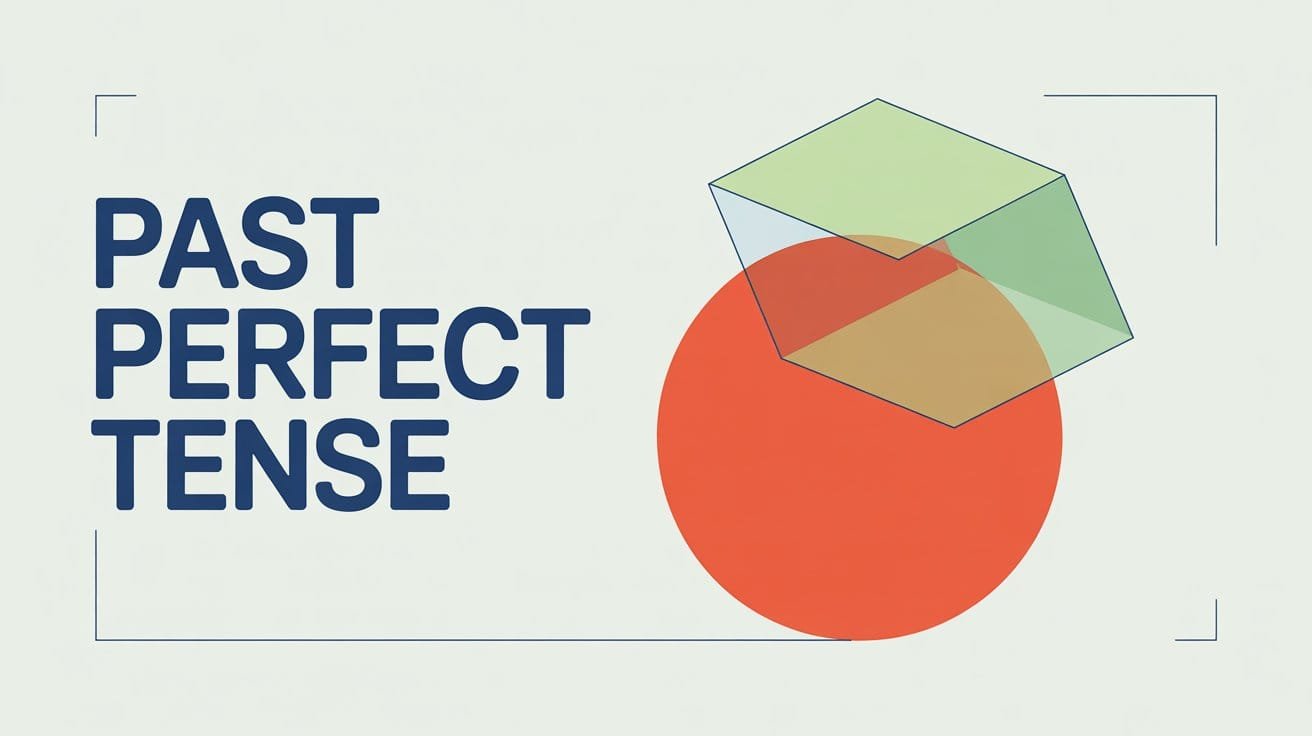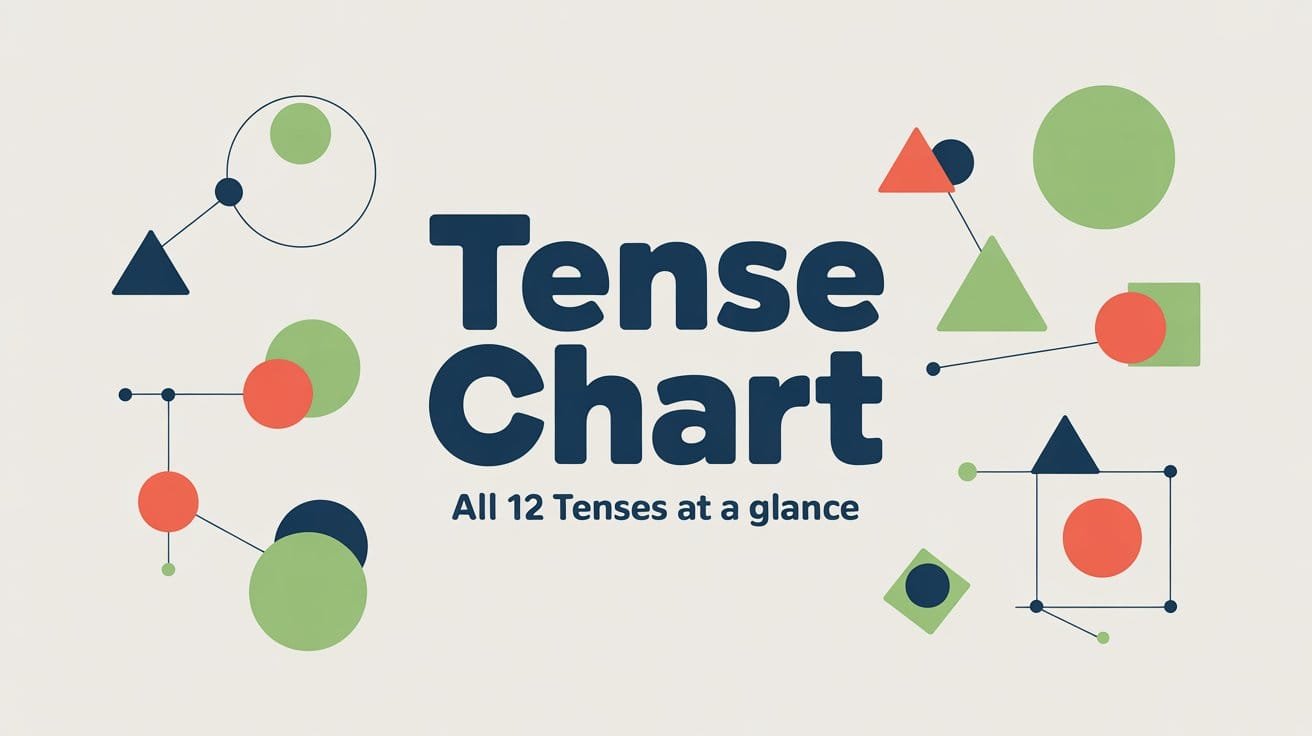The past perfect tense is used to show that one action was completed before another action or point in the past. It helps clarify the order of events, especially when two or more past actions are involved.
For example: “She had left the office before the meeting began.” In this sentence, the past perfect tense (had left) shows that this action happened before the meeting began. Whether you’re writing a story, explaining a sequence of events, or describing past experiences, the past perfect makes your meaning clearer.
Structure of the Past Perfect Tense
The past perfect tense is used to show that one past action happened before another. It’s formed using had + past participle of the main verb. This structure stays the same for all subjects.
Affirmative Sentences
Structure:
Subject + had + past participle
Examples:
- I had finished my homework before dinner.
- She had already left when I arrived.
- They had visited that museum before it closed.
- We had packed everything by 8 AM.
Negative Sentences
Structure:
Subject + had not (hadn’t) + past participle
Examples:
- I hadn’t seen the message before the meeting.
- He hadn’t eaten all day.
- They hadn’t heard the news yet.
- She hadn’t met him before the event.
Interrogative Sentences
Structure:
Had + subject + past participle?
Examples:
- Had you traveled abroad before last year?
- Had she read the book before the test?
- Had they arrived when the concert started?
- Had he finished the report on time?
Usage of the Past Perfect Tense
The past perfect tense helps show the relationship between two actions in the past—one that was completed before the other. It gives clarity when discussing events in sequence or reflecting on past situations.
To Show One Action Happened Before Another in the Past
The past perfect is used for the earlier action; the simple past is used for the later one.
Examples:
- She had cleaned the kitchen before the guests arrived.
- We had already started eating when they called.
- He had saved the file before the power went out.
To Describe Experiences Before a Specific Time
Use it to explain that something had happened before a point in the past.
Examples:
- By 2010, they had already launched three products.
- She had never flown before her first business trip.
- I had heard the song many times before I learned the lyrics.
To Express Regret, Hypotheses, or Imagined Situations
The past perfect is often used in unreal or hypothetical past situations, especially with if, wish, or should have.
Examples:
- If I had studied harder, I would have passed the exam.
- He wishes he had told the truth.
- They should have left earlier.
To Keep Events in Chronological Order
In storytelling, it helps show what had already happened before the main events.
Examples:
- The plane had taken off before we reached the gate.
- She had lived in London before moving to Berlin.
Common Time Expressions with the Past Perfect
Time expressions used with the past perfect tense help show the sequence of actions. They make it clear that one event happened before another in the past.
Common Expressions
- before
- after
- by the time
- when
- already
- just
- never
- until then
- as soon as
Examples
- I had finished dinner before the guests arrived.
- She had left by the time we got there.
- They had already gone to bed when the phone rang.
- We had never seen snow until that winter.
- He had completed the project just before the deadline.
- After she had explained everything, the meeting continued.
Practice Tips for Using the Past Perfect Tense
Understanding the past perfect is easier when you use it to describe real past situations. These tips will help you become more comfortable with its structure and meaning.
Compare Two Past Actions
Practice writing or saying two actions—one that happened first and one that followed. Use had + past participle for the earlier action.
Example:
I had locked the door before I left the house.
Rewrite Stories or News Summaries
Take a simple story and revise part of it using the past perfect to show earlier events.
Example:
Original: She called me after she arrived.
Revised: She called me after she had arrived.
Use Prompts Like “By the time…”
Start sentences with time expressions that cue the past perfect.
Example:
By the time we reached the station, the train had already left.
Practice “If” and “Wish” Sentences
These forms are common in real conversations and help you get used to expressing hypothetical or regretful situations.
Examples:
- If he had known about the delay, he would have waited.
- I wish I had taken more notes during the lecture.
Frequently Asked Questions About the Past Perfect Tense
What is the past perfect tense used for?
The past perfect tense is used to show that one past action happened before another. It helps make the sequence of events clear.
Example: She had left before the meeting started.
How do you form the past perfect tense?
Use had + past participle of the main verb.
This structure stays the same for all subjects.
Example: They had finished dinner before the movie started.
What’s the difference between past simple and past perfect?
Past simple tells what happened.
Past perfect tells what happened earlier.
Example:
I ate lunch at 1 PM. (past simple)
I had eaten lunch before the meeting began. (past perfect)
Can I use the past perfect alone?
Yes, if the time relationship is clear from context. But it’s more commonly used with another past event.
Example:
He had never visited Paris.
She had already left when I arrived.
Do I always need a time expression with the past perfect?
No, but words like before, after, already, and by the time help clarify the timing.
Example: By the time we arrived, the show had started.



